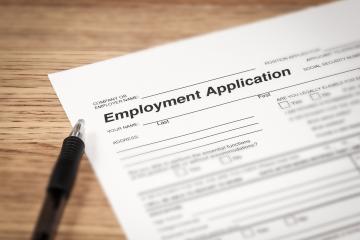
Documenting systemic patterns of employment discrimination in the United States

Researchers Patrick Kline (UC Berkeley), Evan Rose (University of Chicago), and Christopher Walters (UC Berkeley) recently released results from a J-PAL North America funded study that documents systemic patterns of employment discrimination within large companies in the United States. In an interview with J-PAL staff, the research team shares reflections on their study, including how the randomized evaluation was designed to both detect and redress civil rights violations.
Identifying discrimination in the labor market has proved historically difficult in the field of economics. In your recent paper, however, you used a randomized evaluation to determine discrimination found in the hiring practices of Fortune 500 companies. What spurred the idea for this study?
Correspondence studies that send fictitious resumes to jobs have a long history in the social sciences. A famous example comes from the 2004 study by Marianne Bertrand and Sendhil Mullainathan, who showed that jobs ads posted in Boston and Chicago called back fictitious applicants with names like Jamal and Lakisha about half as often as those with names like Emily and Greg. In principle, their results could have been generated by an implicit bias spread equally across all employers in the market they studied. However, in a recent paper, we reanalyzed the Bertrand and Mullainathan data and found that the bias against Black names was highly concentrated in particular jobs.
In this project we aimed to take things a step further and determine to what extent biases against Black names are shared by jobs posted by the same parent company. We were particularly interested in whether some firms have practices that lead to nationwide patterns of discrimination. We had in mind as an example the Denny’s chain of restaurants, which was successfully sued in the 1990s for discrimination against Black customers. Presumably Denny’s customer manuals never suggested that staff discriminate against Black customers. However, that case yielded compelling evidence that Denny’s establishments throughout the country in fact exhibited such discrimination. We wanted to know if similar nationwide biases plague the current recruiting efforts of large employers, which led us to the idea of sampling the Fortune 500 companies.
Can you explain how you designed your study to both detect and redress civil rights violations? What role did randomized evaluation play in the design?
Federal agencies such as the Equal Employment Opportunity Commission (EEOC) often assess charges of hiring discrimination by looking for statistical disparities in the representation of protected groups. Without randomization, however, it is extremely difficult to know what level of representation should be expected at a given firm in the absence of bias. Maybe employment at a firm skews male because few qualified women applied?
Correspondence studies sidestep this problem by using randomization to ensure that applicant qualifications are equalized across protected groups. If a firm disproportionately contacts fictitious applicants with male names, we can rule out the possibility that the observed disparity results from differences in credentials or application behavior, leaving us with a clear statistical benchmark for assessing bias.
The civil rights violations you define in your latest paper have direct implications for Fortune 500 companies and anti-discrimination work. How do you hope your recent findings will impact workplace civil rights in policy and litigation?
Our key finding is that discrimination is highly concentrated in particular firms, with the top quartile of companies accounting for the majority of the racial and gender disparities found in our experiment. These biases tend to be concentrated in customer facing industries (e.g., retail) and at firms with decentralized hiring processes. We hope that this information raises interest in the possibility of better targeting anti-discrimination efforts.
Agencies such as the EEOC are responsible for processing thousands of charges of discrimination a year. While most charges concern a single incident, the EEOC also pursues broader claims of systemic discrimination against parent companies where there is reason to believe a widespread pattern of discrimination against a protected group is present across multiple establishments. How to prioritize systemic claims relative to individual claims has been a matter of some controversy. Our finding that a small number of firms exhibit nationwide patterns of discrimination suggests that the “top down” approach to enforcement taken by the EEOC’s systemic claims unit has the potential to be a cost-effective means of combating discrimination.
What role do you see randomized evaluation playing in future research projects to keep corporations accountable for civil rights violations?
In principle, randomized trials can also be used to assess the biases of particular managers, employees, and even customers. The primary challenge for future randomized evaluations lies in finding new ways to systematically sample and interface with study participants in a way that conforms with ethical guidelines. We are actively exploring these issues.
What advice do you have for other researchers looking to contribute to this evidence base and address discrimination in the labor market?
We have learned an enormous amount from talking to civil rights attorneys and government officials who enforce the Civil Rights Act. Laws do not always conform to the theoretical ideal types of economists. The response of the economics profession has, for the most part, been to simply ignore the laws and fight about these ideal types—in particular, whether disparities are driven by taste based or statistical discrimination. This focus has led to neglect of the theoretically mundane but practically important issue of how best to enforce the law as currently written, a question where economic tools can be deployed to great effect. In the future, we hope to see a tighter link between the field of law and the labor economics of discrimination.




